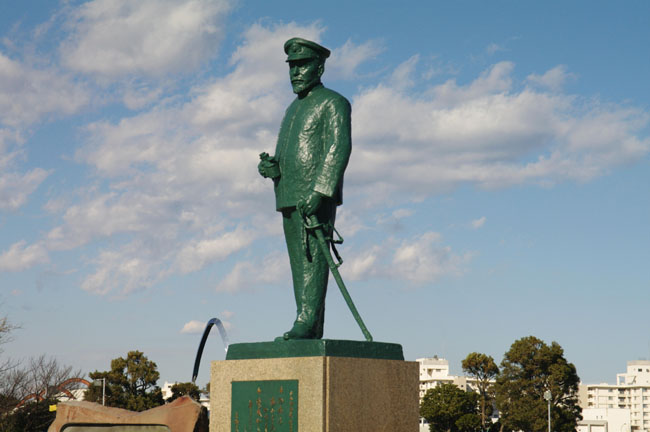|
|
|||||
 |
|
HIJMS Mikasa is a pre-Dreadnought battleship of the Imperial Japanese Navy built at the Vickers shipyard in Barrow-in-Furness, launched in 1900 and completed in 1902. She served as the flagship of Admiral Togo Heihachiro during the Battle of the Yellow Sea on 10 August 1904, and the Battle of Tsushima on 27 May 1905. Mikasa was decommissioned following the Washington Naval Treaty of 1921 and scheduled for destruction. However each of the signatory countries to the treaty agreed that the Mikasa be preserved as a memorial ship and in 1926 Mikasa was put on display in Yokosuka. During World War II Mikasa was bombed during various air raids and following Japan's defeat the occupation forces dismantled her guns, leaving her in a very poor state. A preservation movement began in 1958 with United States participation through financial support and the direct involvement of Admiral Chester Nimitz. Restoration work was completed in 1961 with a many of the missing parts and fittings coming from the English-built Chilean Navy super-dreadnought battleship Almirante Latorre (1915), which was being scrapped in Japan at the time. The Mikasa remains preserved in Yokosuka, about 70 km south of Tokyo, in Miska Park which is also noted for its multicoloured fountain complex. The official web site is in Japanese only though an English version is “under construction”. Mikasa is the last remaining example of a pre-dreadnought battleship anywhere in the world For trivia enthusiasts, in Barrow-in-Furness where Mikasa was built there is a street of local shops on Walney Island named Mikasa Street. |
|
|
|
On the Mikasa herself there is this plaque. |
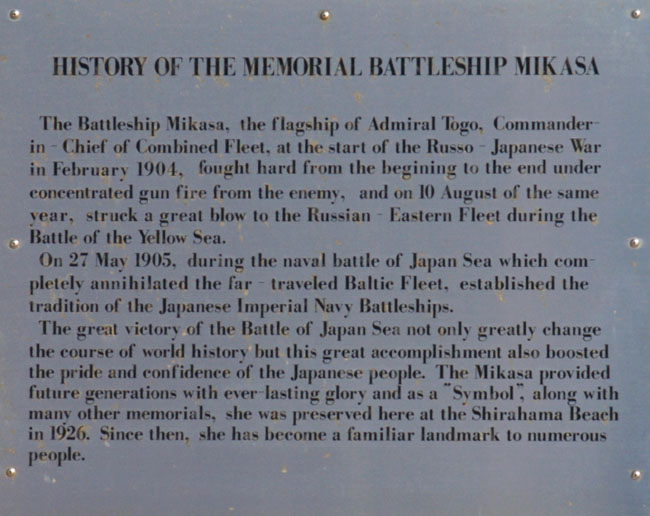 |
|
This is a view of the Mikasa taken from the bow. |
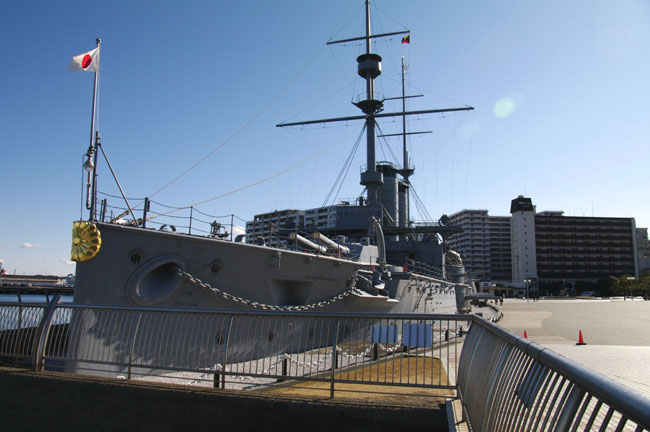 |
|
These are a couple of photographs of the side of the ship showing how it is absolutely festooned with guns (as was typical if ships of the period). The lower row are 14 × QF 6 inch guns in casements (you have to open the armoured covers to fight the guns). The upper row are 20 × 3-inch guns which are open to the sea (and everything else). I would expect that the 6 inch guns would have been unusable in even a moderate sea and the 3 inch gun crews would be soaked most of the time. |
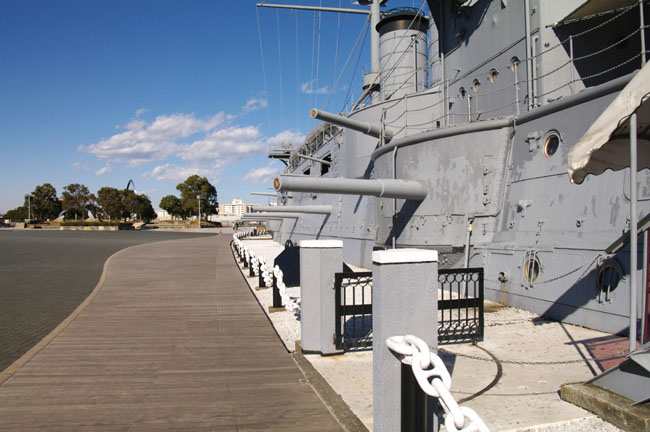 |
|||||||||||
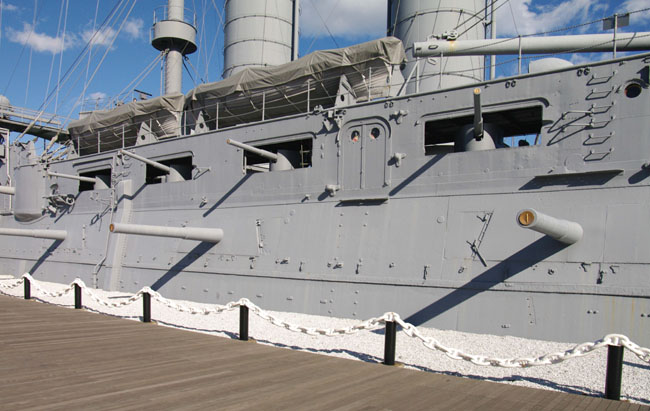 |
|||||||||||
|
This is a view looking back at the 12 inch guns from the bow of the ship. |
|||||||||||
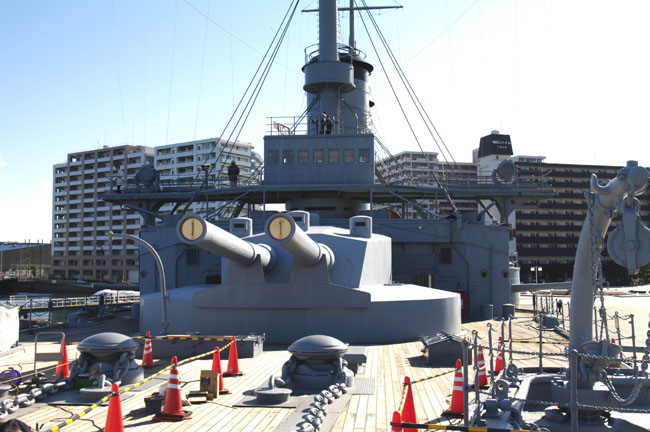 |
|||||||||||
|
This is a view looking forward from the bridge that can be seen in the centre of the photograph above. You can see all the new construction across the bay. |
|||||||||||
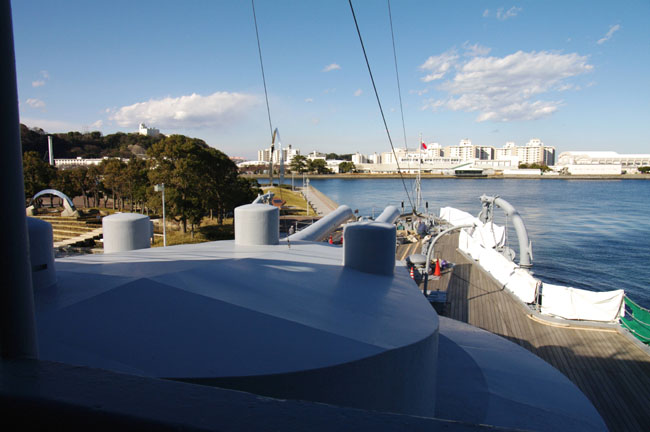 |
|||||||||||
|
The next photograph is of a 6 inch gun, as you can see from the hammocks the crew slept with their gun. |
|||||||||||
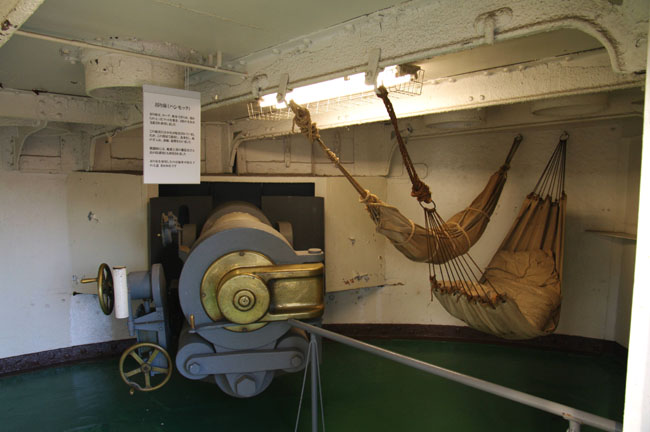 |
|||||||||||
|
The 3 inch gun showing that there was plenty of room for water, and everything else, to get in. I assume that when not in action there was some sort of canvas screen laced through the holes in the frame to cover the opening. |
|||||||||||
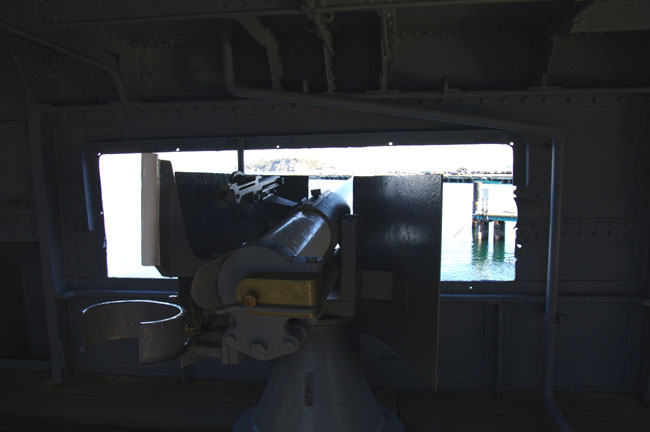 |
|||||||||||
|
Somewhat more luxurious are the Admirals quarters - the furniture (they believe) was presented by Vickers when the Mikasa was handed over, it certainly doesn’t look Japanese. In the second photograph of the Admirals quarters the door leads to the stern walkway (see later photographs for an outside view). I was particularly taken by the "stern chaser" at the far side of the quarters. |
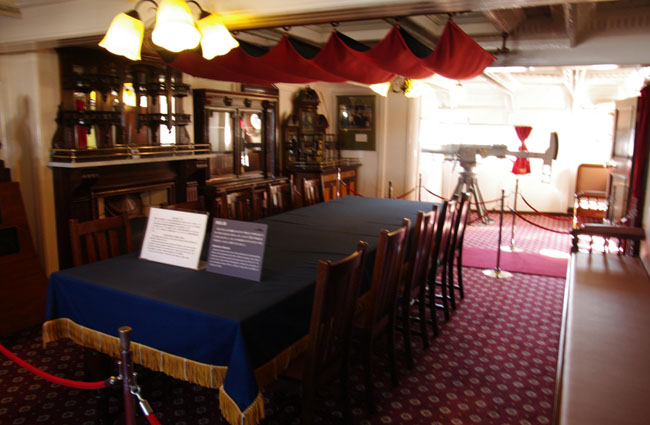 |
|||
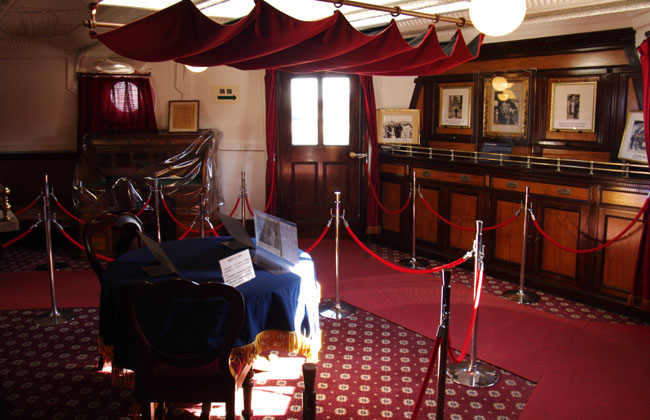 |
|||
|
Here is a close up of the “stern chaser”, when it was brought into action it must have disturbed the officers having a quiet round of Sake and cleaning the carpet afterwards must have been hell. It is also interesting to speculate where they kept the ammunition, perhaps it is in the wooden cabinet to the right. The second photograph shows how a stern chaser looked from the outside. |
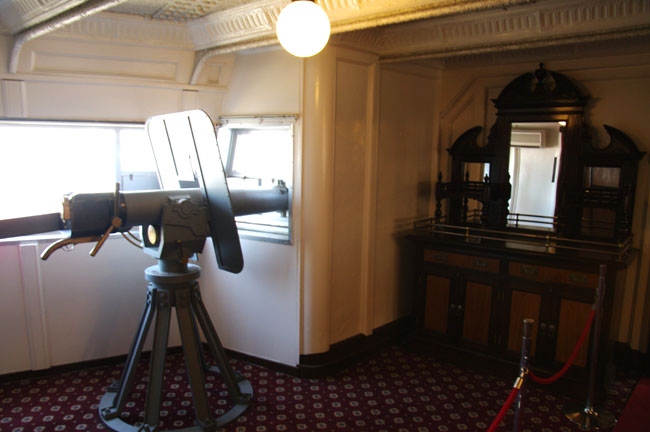 |
|||||||||
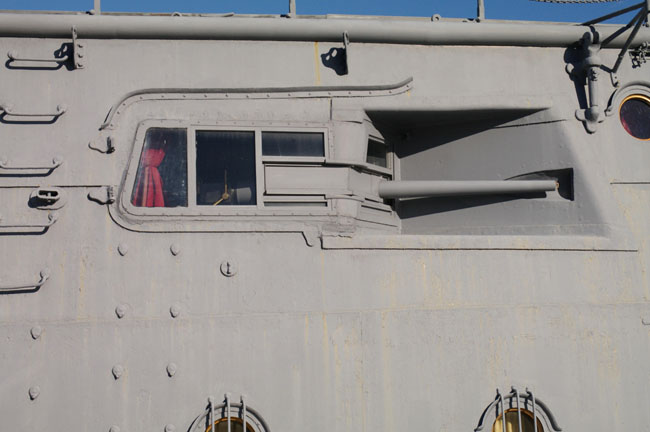 |
|||||||||
|
The Mikasa features a walkway around the stern between doors in the Admirals Quarters. The first photograph shows the outside view of the door whose inside view is shown in the photograph of the Admirals Quarters above. The second photograph shows a stern view of the walkway and the ship. |
|||||||||
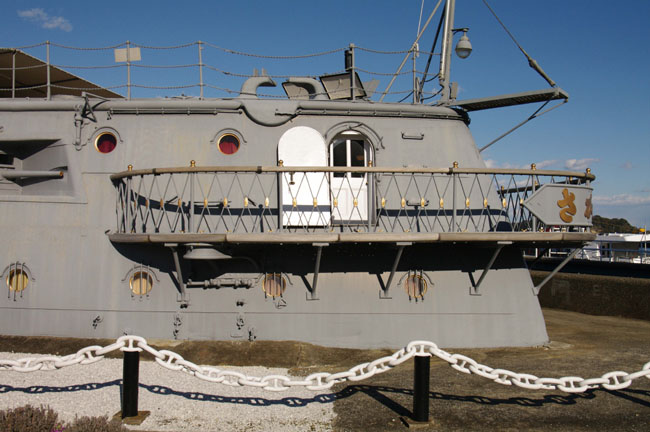 |
|||||||||
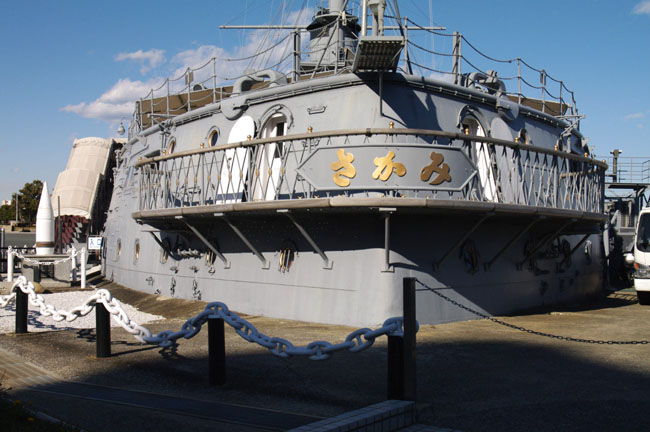 |
|||||||||
|
A fairly recent arrival in the Mikasa Park is this locomotive, I’ve been unable to find anything about it and all the signs were in Japanese. |
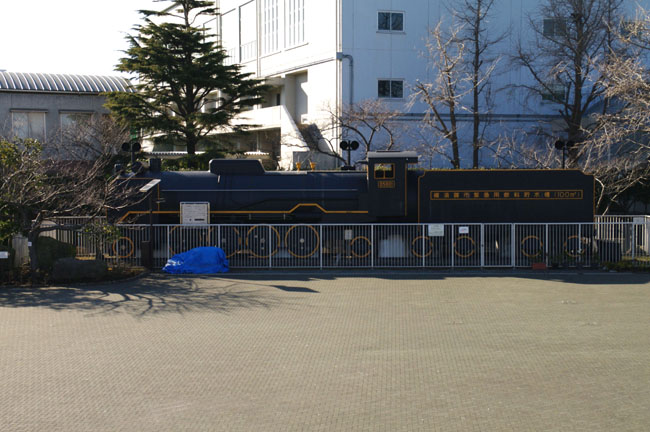 |
|
Go to the Japan introduction page |
|||
|
Go to top of page |
|||
| [New Wildwood] [Contents] [Route 66] [Western Odyssey] [South East USA] [Round the World] [Why Wildwood?] [Site Status and News] |
